Boeing B-52 Stratofortress, half a century in service (part of 2)
DESIGN. The aircraft is a normal scheme with a high wing, eight engines in twin gondolas and a bicycle chassis. Assigned glider resource options B-52D and F - 6000 h, B-52G / H - 12500 h; it was later extended, for example, some B-52 G aircraft had a raid around 1992 hours by the middle of 17700.
The wing has an installation angle of 8 ° (with such a large installation angle, the fuselage on take-off remains almost in a horizontal position), the transverse V angle is -2 ° (in flight due to bending due to the elasticity of the wing, the transverse V angle at the ends becomes positive), the sweep angle along the leading edge 37 °. The relative thickness of the profile at the root / at the ends is approximately 13 / 10%. Wing of all-metal construction, caisson with two girder spars. The casing of the wing box is made of machined panels about 24 m long and made of 7178ST aluminum alloy. The upper panels with solid reinforcement, the bottom - with riveted stringers. The thickness of the panels is reduced in scope (at the root of 100 mm). The casing of the wing tail consists of laminated panels with a metallic honeycomb core. On the B-52G / H, the root of the wing between the inner pair of engines and the fuselage is reinforced. The wing mechanization consists of two-position single-slit Fowler flaps with an area of about 74 м2 with a maximum deflection angle of 50 °. On aircraft versions in B-52F inclusive, ailerons are installed (in the middle of the half-span between the flaps sections) and six-section interceptors (on top of the wing in front of the flaps), on the B-52G / H ailerons are removed. A distinctive feature of the B-52G, modified in the carrier of cruise missiles (CR), is the influx in front of the wing root part, in which the avionics cooling system equipment is located. The sags improve the aerodynamic characteristics of the aircraft and serve as a distinctive feature of the carrier of the Kyrgyz Republic in accordance with the non-ratified agreement OCB-2.
The semi-monocoque all-metal fuselage has an oval cross-section with flat side walls. The front of the cabin is an airtight double deck crew cabin consisting of six people. Excessive cabin pressure 52,0-59,8 kPa (0,53-0,61 kgf / cm 2). The upper cabin is low and does not allow crew members to stand up to their full height. The crew enters the plane through a hatch with an integrated ladder below the front of the fuselage. The crew commander and second pilot are located nearby (on the test aircraft the seats were arranged in tandem) on the upper deck in the Weber armchairs ejected up (safe escape of the aircraft is provided on the ground at a minimum speed of 167 km / h), the EW operator is also on the upper deck in a similar seat in the right rear of the cockpit, the navigator and the scorer on the lower deck with their backs to the flight direction in the seats ejected downwards (the minimum safe escape height is not lower than 76 m, the desired 150 m, at speed to zero).
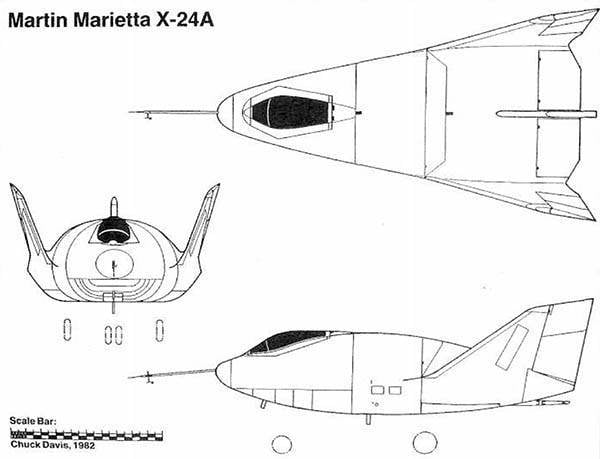
On aircraft modifications according to the B-52F version, the arrows were placed in the hermetic tail compartment; he could climb through the weapons bay to the main cabin, but for this it was necessary to depressurize the cabin. The shooter also performed the functions of an observer, providing identification of other aircraft in the tail hemisphere, detecting launched anti-aircraft missiles, fuel leakage, fire in engines, etc. On the B-52 G / H, these advantages of positioning the shooter in the tail cabin were lost: in order to increase the operating comfort during low-altitude flight in a turbulent atmosphere, the shooter was transferred to the main cabin and placed next to the EW operator as well as the operator flight in an ejection seat upward. Sealing the tail section has been removed. To reduce the cost of flying with 1 in October 1991, the shooter is generally not included in the crew at all. The B-52G / H fuselage is reinforced by the installation of a new partition between the tail and central sections, the new trim of the tail section and the modified central section.
Keel (sweep angle on the leading edge of 40 °) with a rudder, stabilizer (span of 16,95 m, sweep angle of the leading edge of 42 °, along the 1 / 4 line of 35 ° chords) adjustable (controlled by hydraulic drive in the + 7 ° range - - 6 °, in the early versions of the shooter had to carry out emergency manual control through a gearbox with a gear ratio of 200: 1) with elevators. The keel can fold to the right to accommodate the aircraft in the hangar.
The geometric dimensions of the various aircraft variants remained unchanged except for the reduction of the keel height and lengthening of the fuselage on the B-52G / H, compared with the previous versions with a corresponding decrease in the height of the aircraft from 14,64 m to 12,40 m and an increase in its length from 47,58 to 49,05 m. was reduced due to the fact that the operation of the previous versions of the aircraft showed the efficiency of the B-52 parry system for landing during the landing due to the turn of the landing gear, although the danger was somewhat increased the occurrence of lateral vibration of the aircraft type "gollansky step."
The bottom surface of the airframe of most aircraft had a white color to protect against light radiation during a nuclear explosion. In the B-52F and D aircraft, starting from the Vietnam War, the bottom surface was painted black to reduce the likelihood of visual detection.
The chassis of the bicycle scheme with a hydraulic cleaning-release system consists of four main two-wheel racks arranged in pairs in the longitudinal direction and two supporting underwing racks at the ends of the wing. The main racks are removed with the wheels turning almost 90 ° into the niches located in front of and behind the weapon compartment, the right pair of racks are retracted, the left one is forward. Front pillars are controlled on the ground with the help of a hydraulic system with turning wheels within + 20 ° ... -20 °. All four racks can be rotated in flight or on the ground synchronously at an angle of + 20 °. ..- 20 ° for parrying drift when landing in cross-wind conditions. The release of each main rack is independent, and the aircraft can make an emergency landing on three or in some cases on two (front and opposite rear) racks. Dimensions pneumatics 1420x410 mm, multi-disc wheel brakes with automatic braking. The underwing pillars are retracted to the wing ends. When landing, a band parachute with a diameter of 13,4 m (maximum speed when 250 km / h is released) is used, which is located in the rear fuselage. Chassis track 2,51 m, base 15,48 m.
POWER POINT includes eight engines installed in twin gondolas on the underwing pylons and separated in pairs by vertical fire walls, turning into long pylons made of stainless steel and titanium alloy. The pylon is attached to the nodes on the wing box with four bolts. The lower part of the engine hood swings down at the hinges, providing an inspection of the engines from the ground. In all embodiments of the aircraft, except B 52N, various modifications TRD Pratt & Whitney J57 (a variant civil JT3C engine) with a thrust of 38,7 kN (3945 kgf) at a pilot modification YJ57-P-3 to 49,8 / 61,2 kN (5080 / 6240 kgf) without / with injection of water-methanol mixture in the last serial (J57-P-43WB). On the B-52H installed TRD Pratt-Whitney TF33.
J57 is a twin-shaft turbojet engine with a 9-stage LP compressor and a 7-stage HP compressor, a tubular ring combustion chamber, a single-stage HP turbine and a 2-speed LP turbine. TF33 - TRD with 2-speed fan, 7-speed LP and HP compressors, tubular ring combustion chamber, single-stage HP turbine and 3-speed LP turbine. J57-P-43WB (TF33) has a length of 4,238 (3,450) m, maximum diameter 1,016 (1,346) m, dry weight 1755 (1770) kg, air consumption 82 kg / s.
Each J57 engine is equipped with a 32 liter saddle oil tank. The oil radiator is located in the center of the air intake. J57 engines are equipped with a water-methanol injection system (for take-off with a mass of more than 163300 kg) with four pumps driven by air turbines. A tank with a capacity of 4542 l with a water-methanol mixture is installed in the fuselage in front of the wing. More powerful engines TF33 injection systems do not have. The launch of the first two engines is carried out from the ground-based gas turbine installation, the rest from the pneumatic system of the aircraft. On the aircraft on duty, all engines are started for 1-2 minutes using solid-fuel starters.
The fuel is placed in 12 tanks: soft tanks of the fuselage, wing caisson tanks (on early aircraft modifications on B-52F inclusive soft tanks, on B-52G / H - compartment tanks) and two hanging tanks installed between the outer pairs of engines and the ends of the wing and also used as protivoflatternyh cargo (initially used dumped tanks with a capacity of 3785 l or, starting with B52C to 11355 l, on options B-52G / H - non-resetting tanks with a capacity of 2650 l). The in-flight refueling system receiver is located on top of the fuselage behind the flight deck.
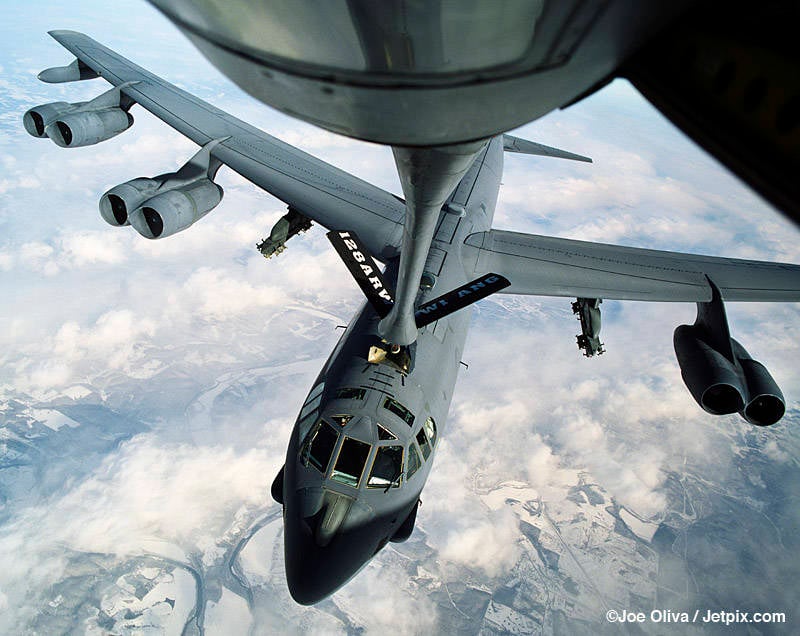
Aircraft systems
Control system with mechanical wiring. The longitudinal and trackless control is carried out by the elevator and heading; lateral control on aircraft variants in B-52F inclusive - by ailerons and interceptors (which are hydraulically actuated, are used to control roll in addition to ailerons during landing, air refueling and maneuvering, as well as air brakes), on versions B-52G / H - only by interceptors. There is an autopilot.
On the B-52G / H in low-altitude flight, a resilience enhancement system (SAS) of the ESR 1195 type works, reducing the load on the structure in a turbulent atmosphere. This is one of the first active damping systems for aero-elastic oscillations that replaced the old passive methods, which involved strengthening the structure, using weight balancers, and imposing restrictions on acceptable flight conditions (which makes the structure heavier and limits JIA's capabilities). The ECP 1195 system damps the flexural vibrations of the tail section of the aircraft fuselage due to the deflection of the rudder and the height of the acceleration sensors. It was introduced after the first high-altitude B-52 began to fly at low altitudes. A specific “stimulus” to the development and installation of the system was an accident that occurred in flight near the Rocky Mountains (Colorado), when the turbulent loads on the vertical tail exceeded the calculated and vertical plumage collapsed.
The landing minimum for B-52 includes the height of the lower clouds 60 m and the visibility range on the 730 m runway. The maximum permissible side wind speed when landing with a mass of 131450 kg on a dry runway is 22 m / s and on a wet runway - 12,5 m / s.
Initially, a hydraulic system was installed with a working pressure 18,1 MPa (185 kgf / cm2) with a pneumatic system 10 pump, then a system with 20,7 MPa pressure (211 kgf / cm2) consisting of six independent hydraulic systems with a six pump drive from two engines and two hydraulic systems electrically driven pumps. There are also backup hydraulic pumps with electric drive. The hydraulic system serves the interceptors, flaps, the stabilizer shifting mechanism, the bombshell doors, the chassis cleaning and release mechanism, the chassis brakes and its reversal mechanism, the drum PU turning mechanism.
On airplanes, according to B-52S, there is a pneumatic system with air extraction at a pressure of 1,4 MPa (14,5 kgf / cm2) and a temperature of 400 ° С from engine compressors.
The air conditioning system is powered by air from the engine compressors, the units of the system are mounted in the body of the front part of the fuselage. Oxygen system with gasifiers and cylinders with a capacity of 8 l.
The alternating current power supply system (400 Hz) is powered by 4 generators with 40 kA power, driven by motors (with B-52S variants with air-turbine drive). During the modification of the aircraft, an additional DC source, rectifiers, converters and regulators are installed, which provide a supply of stabilized DC for the RC.
There is an anti-icing system serving the windshield, engine nacelles, LDPE. The wing and tail assembly of the anti-icing system do not have.
Target equipment
All variants of the B-52 aircraft are equipped with analog navigation bombers. In the first versions, the APS-23 survey radar, a range finder, and a bomber optical sight were used. Further, the use of an optical sight was apparently decided to be abandoned and high-altitude sighting bombing is impossible, since it does not take into account flight altitude, aircraft roll, place of suspension of bombs (in the bomb bay or on external nodes), etc.
The latest versions of the B-52G / H have undergone a number of modifications during operation. 1971-1977 An AN / ASQ-52 (EVS-Electro-optical Viewing System) optoelectronic survey system was installed on all B-151G / H systems, which provides for avoiding ground obstacles in flight at low altitudes and evaluating the results of the attack. its composition includes an AN / AVQ22 AN / AVQ45 Westinghouse camera located on two swiveling turrets under the nose of the aircraft T (for the left turret; scanning angle ranges + 45 ° ... -15 ° in azimuth, 45 ° up and 6 ° down; maybe three times zoom image) and the Hughes AN / AAQ-180 IR Front View System (right). Both turrets can be turned to XNUMX ° for storage when not in use (to reduce abrasive wear on optics).
The B-52 possesses one of the most powerful on-board electronic warfare systems among US Air Force aircraft, including instrumentation misinforming and noise interference, as well as IR traps and dipole reflectors. The B-52G / H aircraft are equipped with the following defensive radioelectronic equipment: Motorola AN / ALQ-122 (SNOE) systems with high degree of automation and Northrop AN / ALQ-155 (V) with radiation power control to suppress the most dangerous Radar, advanced versions of interference transmitters in the X range ITT Evioniks AN / ALQ-117 (on B-52G) and AN / ALQ-172 (on B-52Н), digital receiver of radar warning of radiation Dalmo Victor AN / ALR-46, pulse Doppler radar protection Westinghouse AN / ALQ-153, additional Northrop AN / ALT-28 interference transmitters and AN / ALE-20 IR traps. The total mass of EW equipment reached 2,7 t.
Initially, one of the basic elements of the B-52 equipment was an astro-inertial navigation system, which, in particular, was used to enter data before launching the Hound Dog rocket. 1981-1990 On all B-52G / H aircraft, the OAS (Offensive Avionics System) complex of offensive radio-electronic systems was installed using digital equipment on solid-state elements. The OAS complex includes DISA Teledine Raynan APN-218, Haniwell High Precision Inertial Navigation System AN / ASN-131 (GEANS - Gimballed Electrostatic Airborne Inertial Navigation System), the Honeywell radar altimeter, Lear headler laser radar, an unaccompanied airborne radar altimeter from the Laer Sigler radar altimeter, an unaccompanied astronomical radar altimeter from the Laer Sigler radar altimeter, an unarmed airborne laser from Lear, Sigler, an unarmed radar altimeter of the Air Force Inertial Aeronne Navigation System; IBM / Rayq ASQ-38 system with digital computer, upgraded radar mapping and fly-around obstacles of the Norden company, new controls and indicators of the Sperry company (reproduction of data from 40 sensors is provided). All B-52H are equipped with the ALQ-172 (V2) REB system, X-NUMX of the B-129G aircraft - with the ALQ-52 (V172) system.
Information from the optoelectronic system, the bomber-navigation system and the radar of overflying obstacles, as well as the flight information are displayed on a CRT (with screen sizes 25 cm) installed in the workplaces of the crew commander, second pilot and navigator. On a CRT, in particular, airspeed, altitude over a radio altimeter and the remaining time are given (until weapons). The obstacle flyby system on the B-52 aircraft is significantly inferior in its capabilities to similar-purpose systems on subsequent strategic bombers and attack planes A-6, F-111 and F-15E. This is a director system, which gives a CRT a range to ground objects, their azimuth and the image of the front terrain with a switchable pilot distance scale of 4,8, 9,6 or 16 km. There are two display modes: terrain and its maps. If there is a hill ahead on the course, a directional signal is displayed on the indicator, indicating to the pilot that he must climb.
The use of new equipment with the installation of additional fairings and antennas increased the aerodynamic drag of the aircraft and the maximum cruising number M, which was initially 0,90 for the latest versions of the aircraft, was reduced to 0,84.
From 1994, it was planned to replace the AN / AAQ-6 IR system with the Loral IR system, characterized by the use of the 640x480 IR mosaic array of platinum silicide-based IR detectors. The new system works in the 3-5 micron range (unlike the old one operating in the 8-12 micron range), has two fields of view (wide for navigation and narrow for target acquisition) and is also installed on the turret. This should be the first use of the platinum silicide IR sensor technology in the military system in service.
All RB-52B reconnaissance aircraft and B-52C aircraft in the armament compartment provided (but rarely used) the installation of a double sealed container with reconnaissance equipment, including AFA and electronic equipment, and radio equipment to communicate with the rest of the crew.
weaponry
The offensive weapon is installed in the weapon compartment (length 8,5 m, width 1,8 m, volume 29,53 m 3) and on two underwing pylons (between the fuselage and the internal pairs of engines). B-52 is primarily a carrier of nuclear weapons. the initial period of its operation was the main nuclear weapons of the Mk.5, 6, 15, 17, 36, 39, 41, 53 and 57 free-fall bombs, which were located in the weapons compartment. Later, the B28, 43, 61 and 83 nuclear bombs (up to eight in the weapons compartment) were introduced into the armament. The last two types of bombs (B61 and B83) are being used, with four bombs being the typical load.
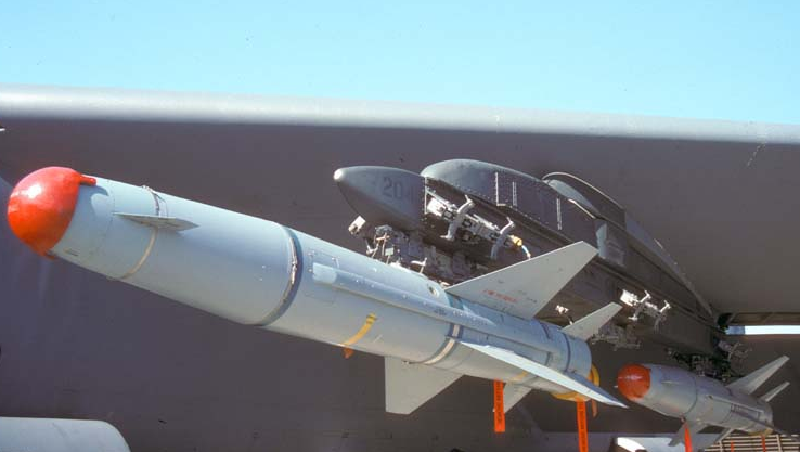
1961-1976 The B-52C, D, E, F, G and H were armed with the North American AGM-28 (GAM-77) "Hound Dog" with a nuclear warhead (with a height of launch to a practical ceiling) designed to hit highly protected targets without entering the zone of the enemy’s air defense system and for suppressing the enemy’s air defense systems in order to facilitate the subsequent destruction of targets with bombs; one aircraft could carry two UR AGM-28 (one on each under-pylon). The launch mass of the AGM-28B 4600 rocket kg, the launch range to 1250 km. The Pratt-Whitney J52 TRDs, mounted on AGM-28 rockets, were usually used as booster packs in addition to the main engines of the aircraft during takeoff (the fuel supply of the missile was replenished in flight from the aircraft’s tanks). Due to the selection of fuel in the tanks of missiles, as well as due to the additional aerodynamic resistance of the AGM-28 UR, the bomber's range decreased by 17% when used. It was also intended to use the AGM-48 (GAM-87) Skybolt, the development of which, however, was discontinued.
1960-1978 missile targets were used (or, as they were then called sabotage shells) McDonnell-Douglas ADM-20 (GAM-72) "Quayle", which were located in the weapons compartment. The ADM-20 missiles had an EPR close to that of the B-52 aircraft, had to be launched when overcoming air defenses at high altitude and flew along a programmed trajectory or radio commands from the carrier. It was a fairly effective means of diverting enemy anti-aircraft missiles, but the B-52 could carry only up to four such missiles, which, with a considerable mass (about 550 kg each) and sizes, significantly reduced the available combat load.
- Ilyin V.E., Levin M.A.
- Boeing B-52 Stratofortress, half a century in service (part of 1)
Boeing B-52 Stratofortress, half a century in service (part of 2)
Boeing B-52 Stratofortress, half a century in service (part of 3)
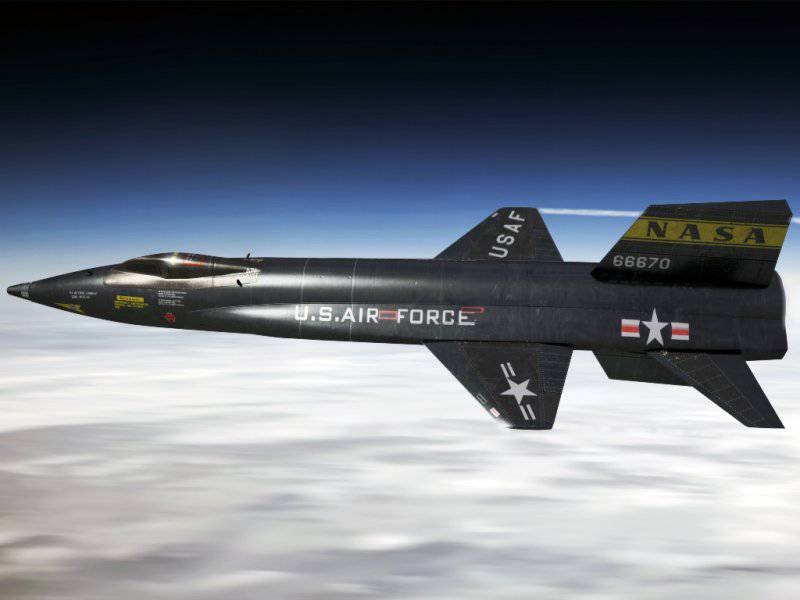
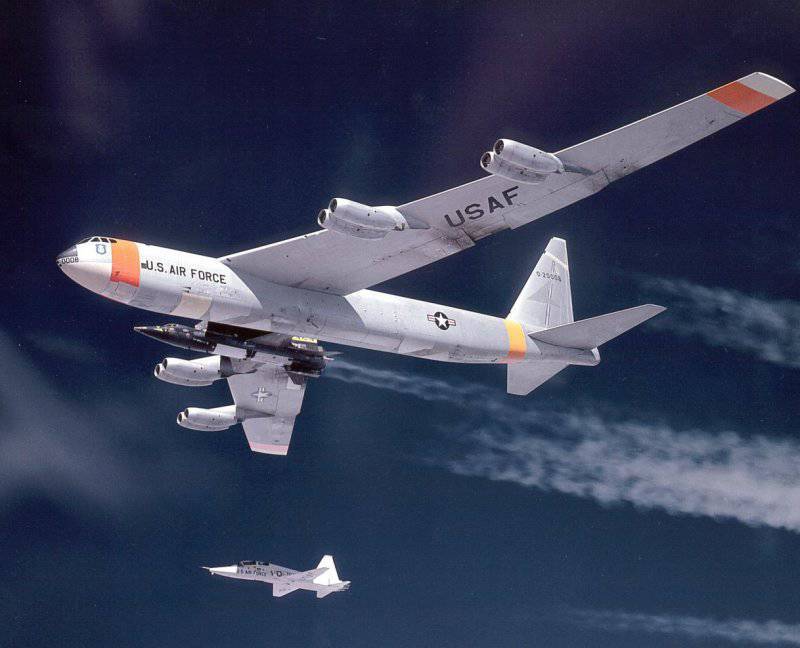
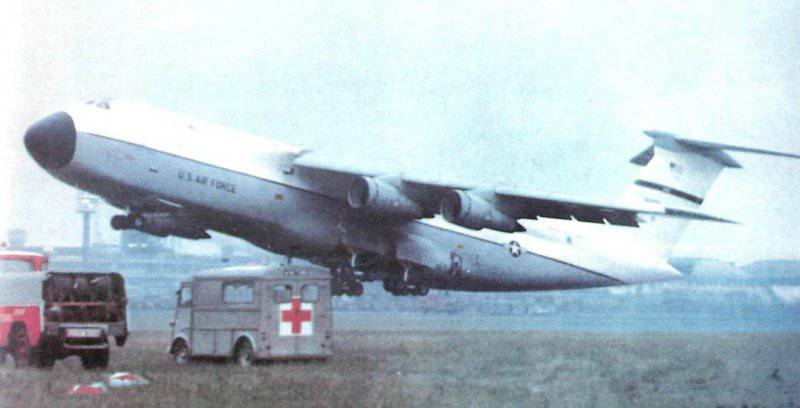
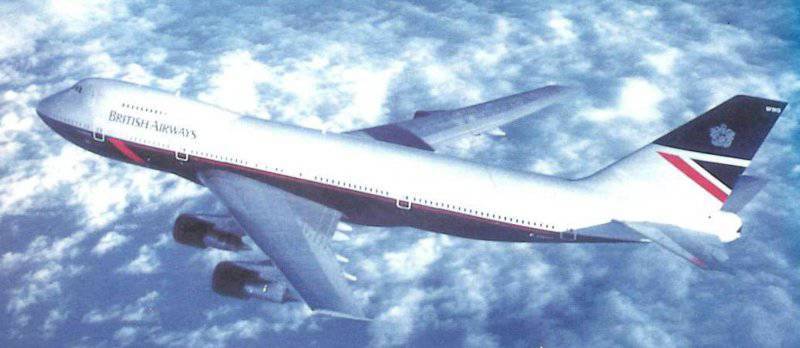
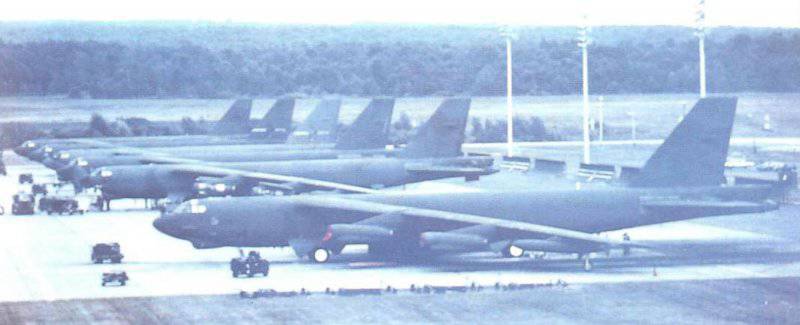
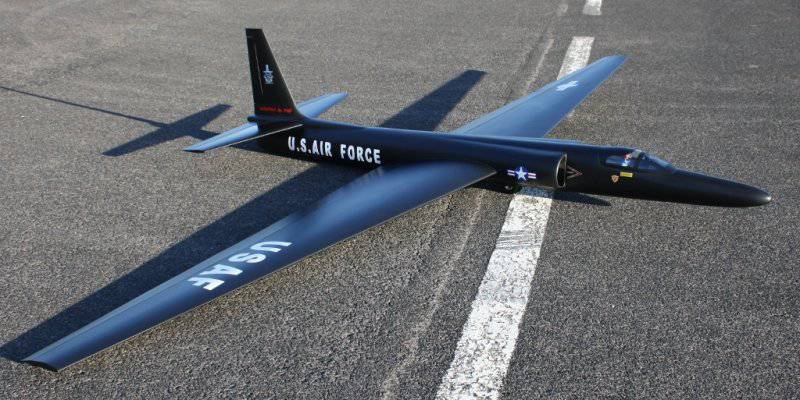

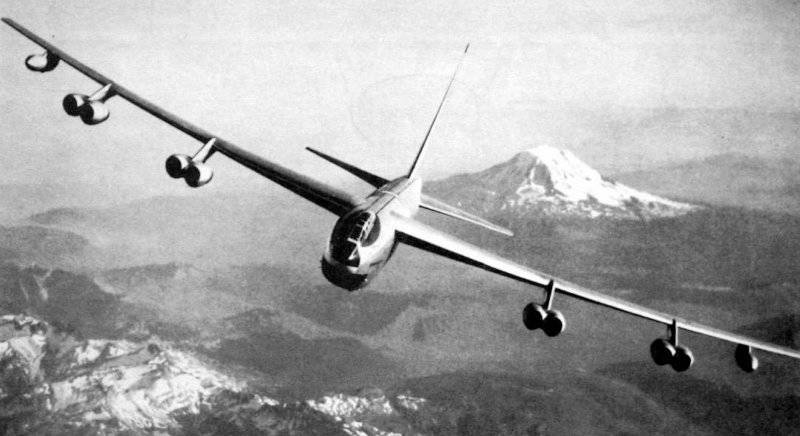
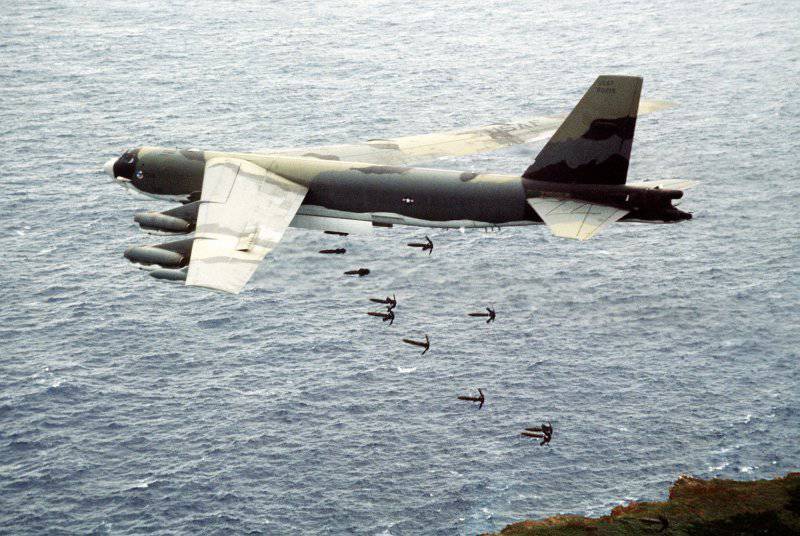
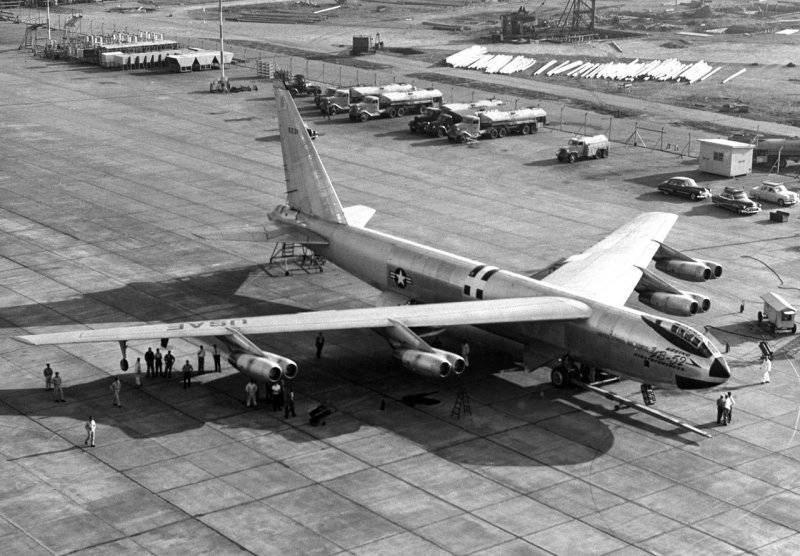
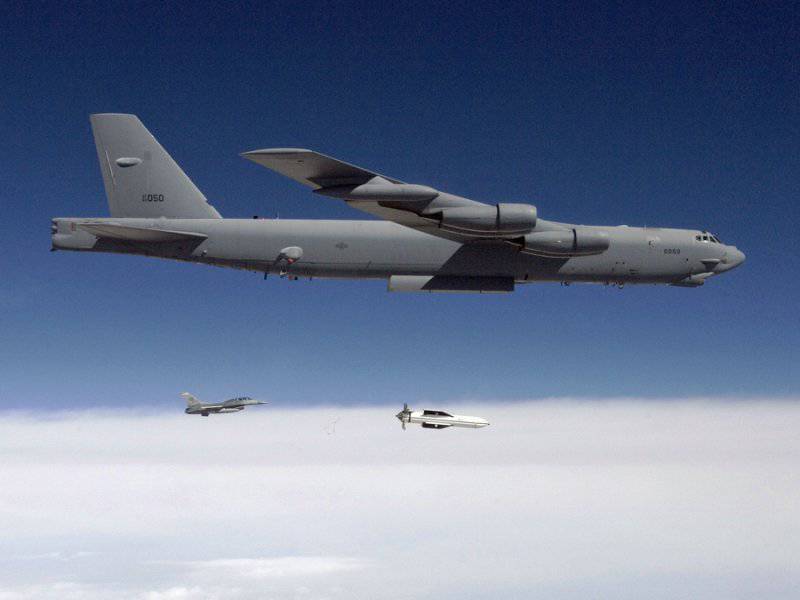
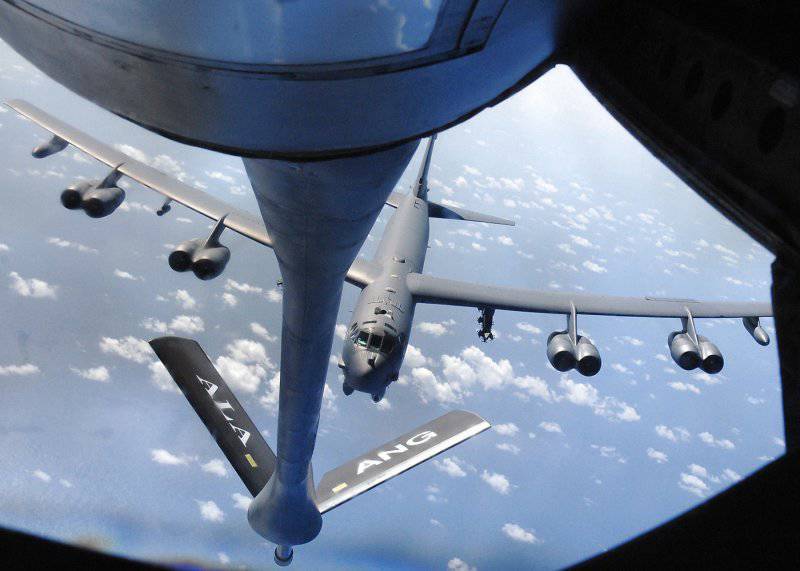
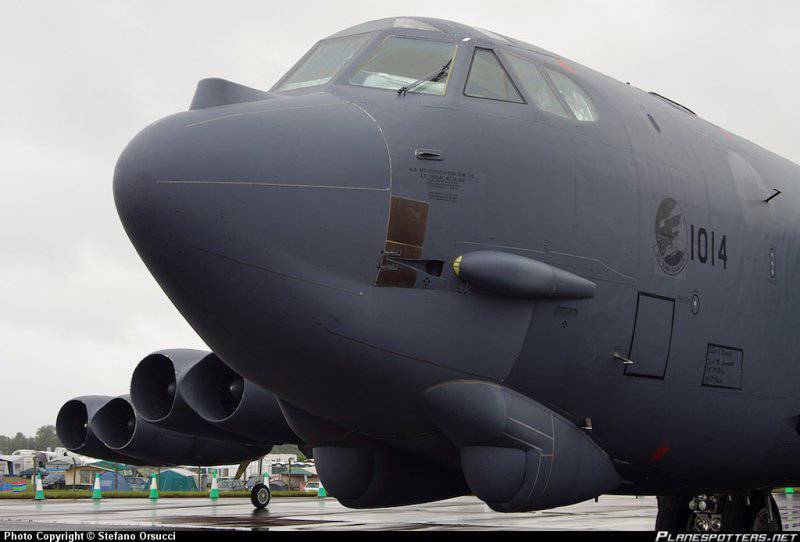
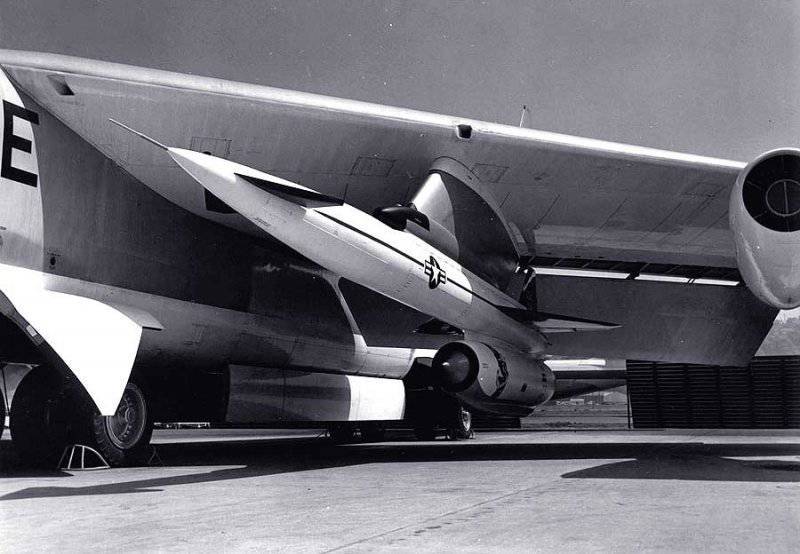
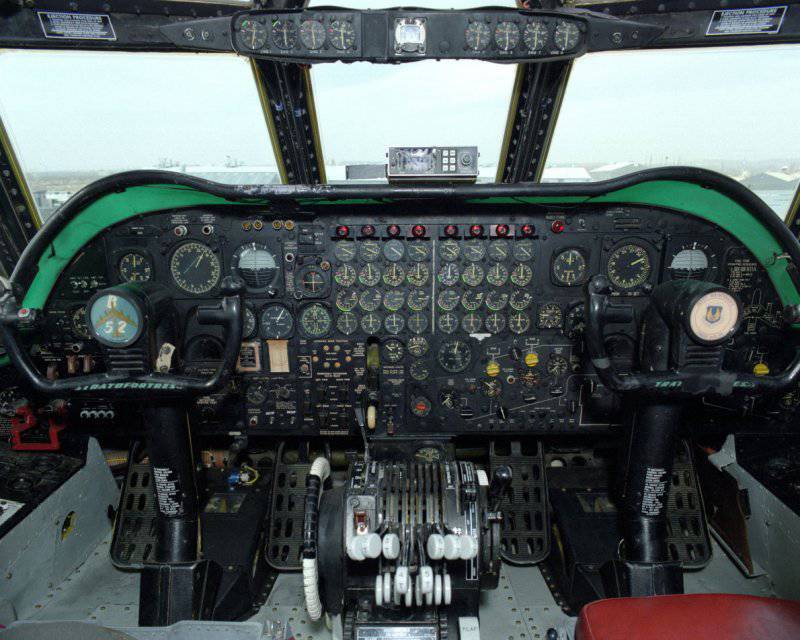
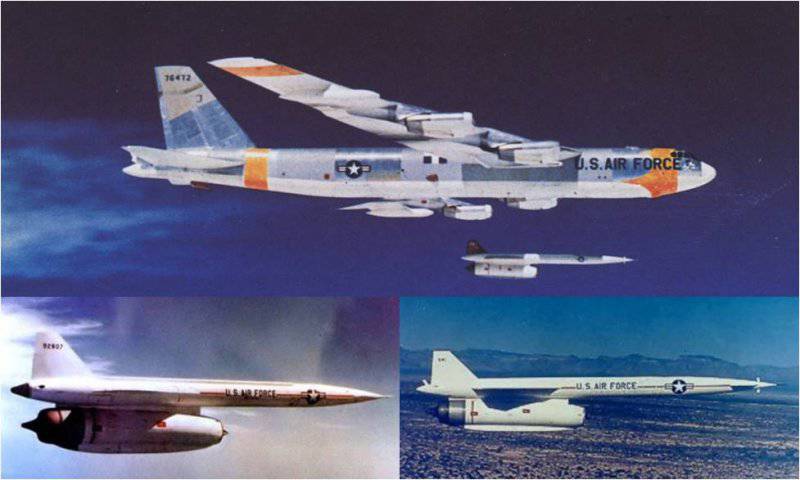
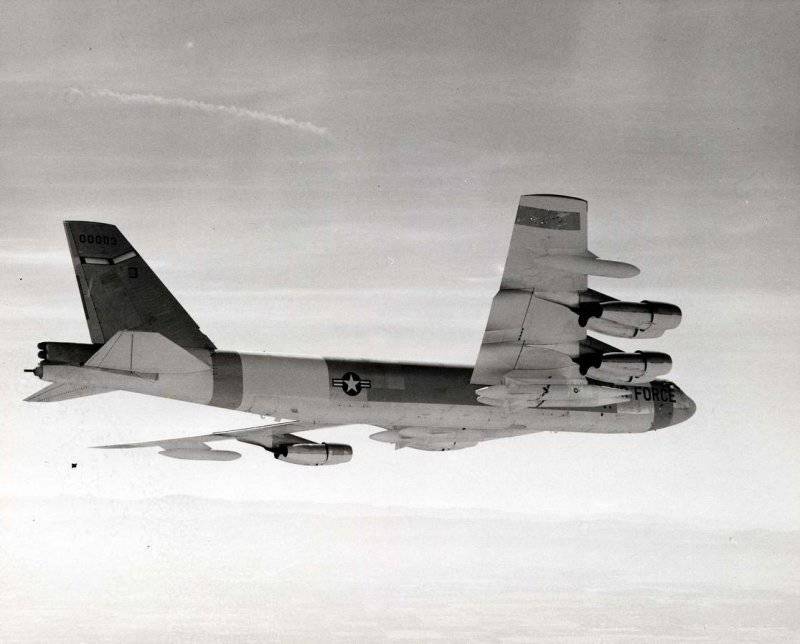
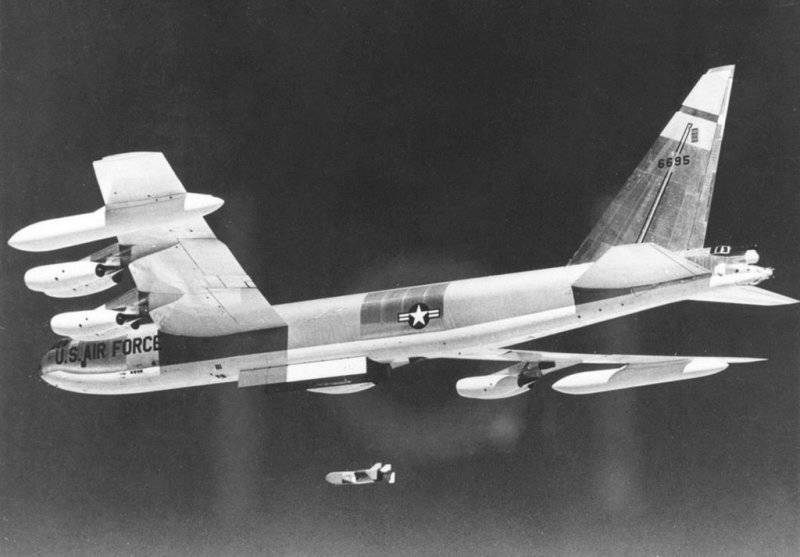
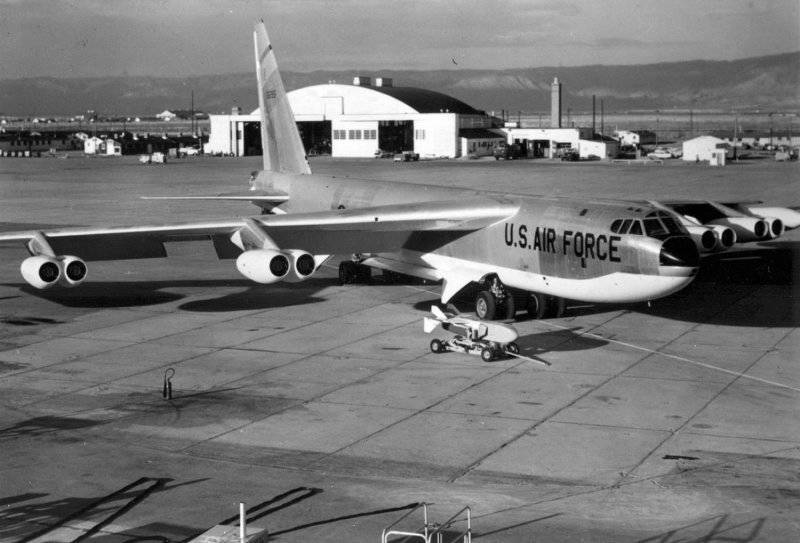
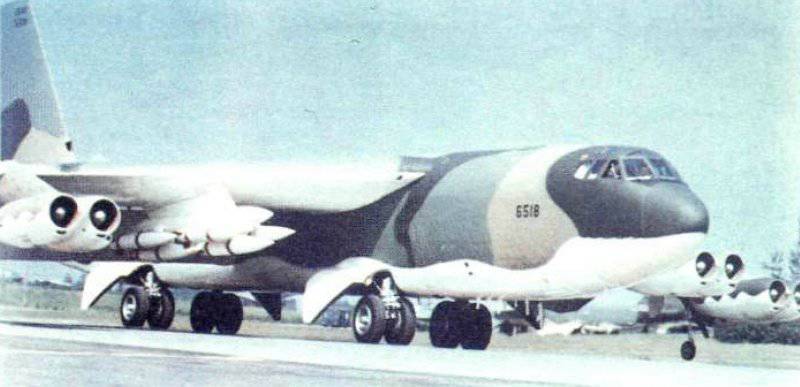
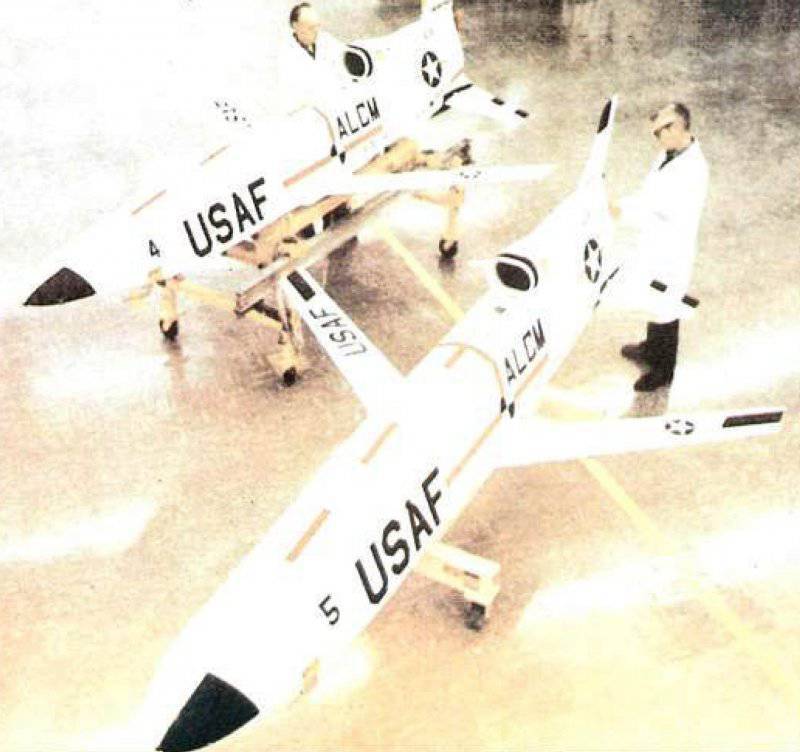
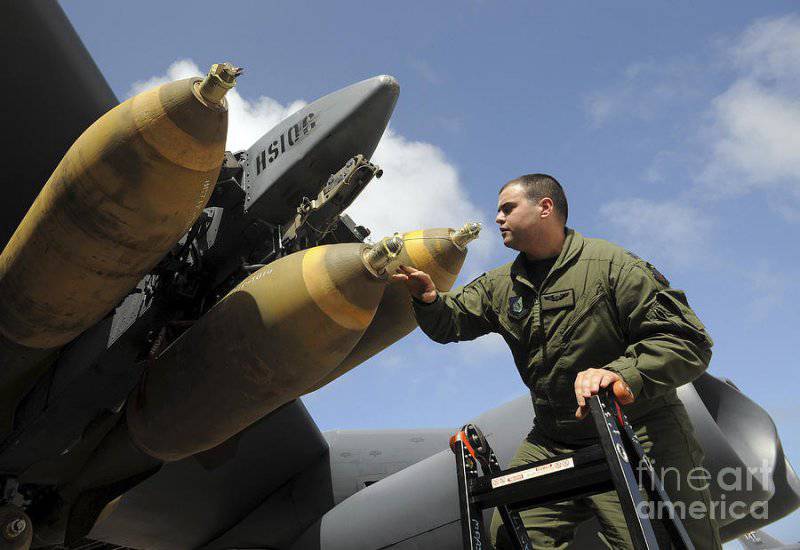
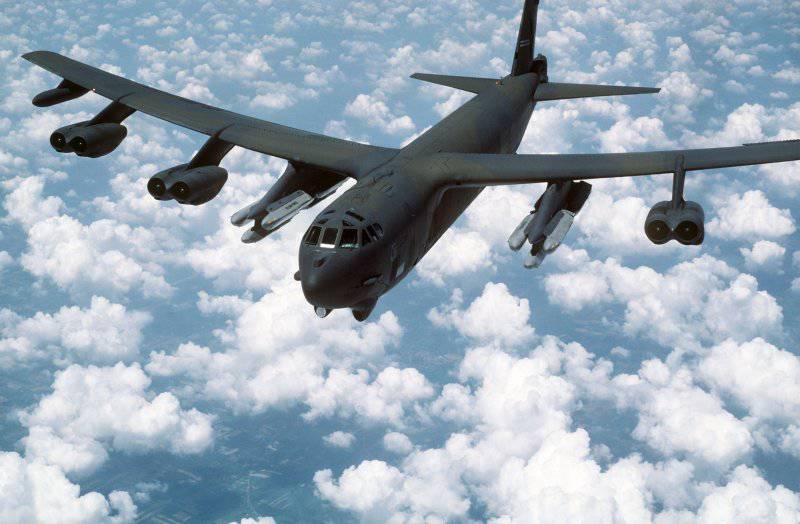

Information